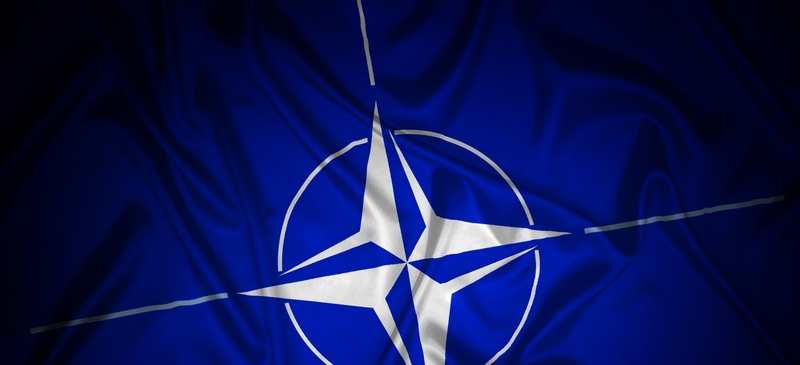
EU should duplicate NATO assets
Many American policy-makers are worried that the European Security and Defence Policy (ESDP) could undermine NATO and damage the transatlantic relationship. Some of their concerns are valid, but the oft-repeated idea that the EU's defence organisation should not duplicate the work of NATO needs to be re-examined. Both Europe and the United States could benefit from the constructive duplication of military assets that already exist within NATO.
European governments assume that when the EU performs military missions it will usually need to borrow or rent "NATO" assets, most of which are really owned by the US. However, those assets which the EU is most likely to need are also in short supply in US forces. The high tempo of operations in the past ten years has worn out US equipment at a much faster pace than expected, prompting a crisis in the funding of new weapons systems. Europe could win much greater American support for the ESDP if it developed its own capabilities in areas that reduced the burden on over-extended US forces.
To take one such example, the fact that Europeans lack the means to move troops quickly constrains their ability to manage a crisis through military intervention. While the purchase of new military transport planes such as the Airbus A-400 is desirable, cheaper alternatives also deserve consideration. The EU's governments could buy or lease planes from Russia or Ukraine to build up the necessary capacity quickly. They should also consider a "civilian reserve air fleet" programme - similar to that already in existence for shipping - which would allow them to requisition private-sector aircraft in a time of war; or joint purchases, such as the Netherlands and Germany plan to do with the A-400. An EU Transportation Command could manage these various combinations of capability.
The Europeans also suffer from shortfalls in the field of intelligence. But the problem is less a lack of information than the inability of the governments to agree upon common assessments of particular problems. The EU should create a specialist unit with responsibility for collating and analysing information from national intelligence channels, and place it under the control of Javier Solana, the EU's High Representative for foreign policy.
This would boost the EU's intelligence capabilities sooner than an attempt to build European collection capabilities, for example through the construction of EU spy satellites. Such a unit could also encourage greater sharing of intelligence across the Atlantic, especially if security standards in all EU member-states reached the levels that apply in countries with privileged access to US intelligence, such as Britain.
at the tactical level, the EU peacekeeping missions are likely to require unmanned aerial vehicles as well as Airborne Early Warning and Command (AWACs) aircraft. EU countries could save money by pooling the cost of developing these systems, and then run them as EU squadrons, just as NATO has its own AWACs aircraft. Provided that these EU units were also available to NATO, they should pose no political problem. On a similar basis, the EU could invest in its own aircraft for mid-flight refuelling, creating a fleet that was planned, organised and commanded under EU auspices.
If Europe wants to make a more visible contribution to the alliance, through the power to "shock and awe" potential adversaries independently of NATO, it will require an increased capacity to mount precision attacks from a distance. Britain, France, the Netherlands and Italy have already decided to buy air-launched cruise missiles, while Germany is exploring its options.
General Klaus Naumann's proposal for a force of unmanned aerial vehicles armed with supersonic cruise missiles (in CER Bulletin No12) has considerable merit. It would allow Europe to play a leading role in high-intensity combat missions, particularly in the early stages. However, squadrons of aircraft armed with precision munitions would serve the same purposes more cheaply.
EU governments also need to think more about collective research, development and procurement (RD&P). European RD&P funding levels are insufficient for existing needs and are unlikely to increase substantially in the foreseeable future. An EU body under Mr Solana could aim to pool some of the national contributions to RD&P, thereby taking advantage of potential economies of scale. Such an EU body - building on the existing agency for managing joint weapons programmes, OCCAR - could set priorities for equipment purchases for the various European armed forces. This would stimulate competition among defence suppliers and promote a Europe-wide market.
It is true that a genuinely transatlantic defence market would be preferable, but there remain huge political obstacles to ensuring equal access for EU defence suppliers in the US and vice versa. An EU agency would duplicate the NATO planning work currently undertaken by the Conference of National Armament Directors (CNAD), which tries to push governments to choose the systems that best serve NATO's military needs. However, the gridlock in NATO's committees and a lack of political impetus have prevented the CNAD from achieving a great deal. So this is an area of NATO planning where the risks of duplication are worth taking.
If the EU could build up these kinds of military capability, it would earn America's respect and calm fears that the ESDP could weaken NATO. The European militaries would become more useful partners for the US - and thus boost the influence of EU governments in US decision-making. Europe would have a greater range of choices over what action to take in a crisis. So the Europeans should allocate some of their scarce resources to the duplication of capabilities that both enhance EU autonomy and reduce their dependency on over-stretched US forces.
